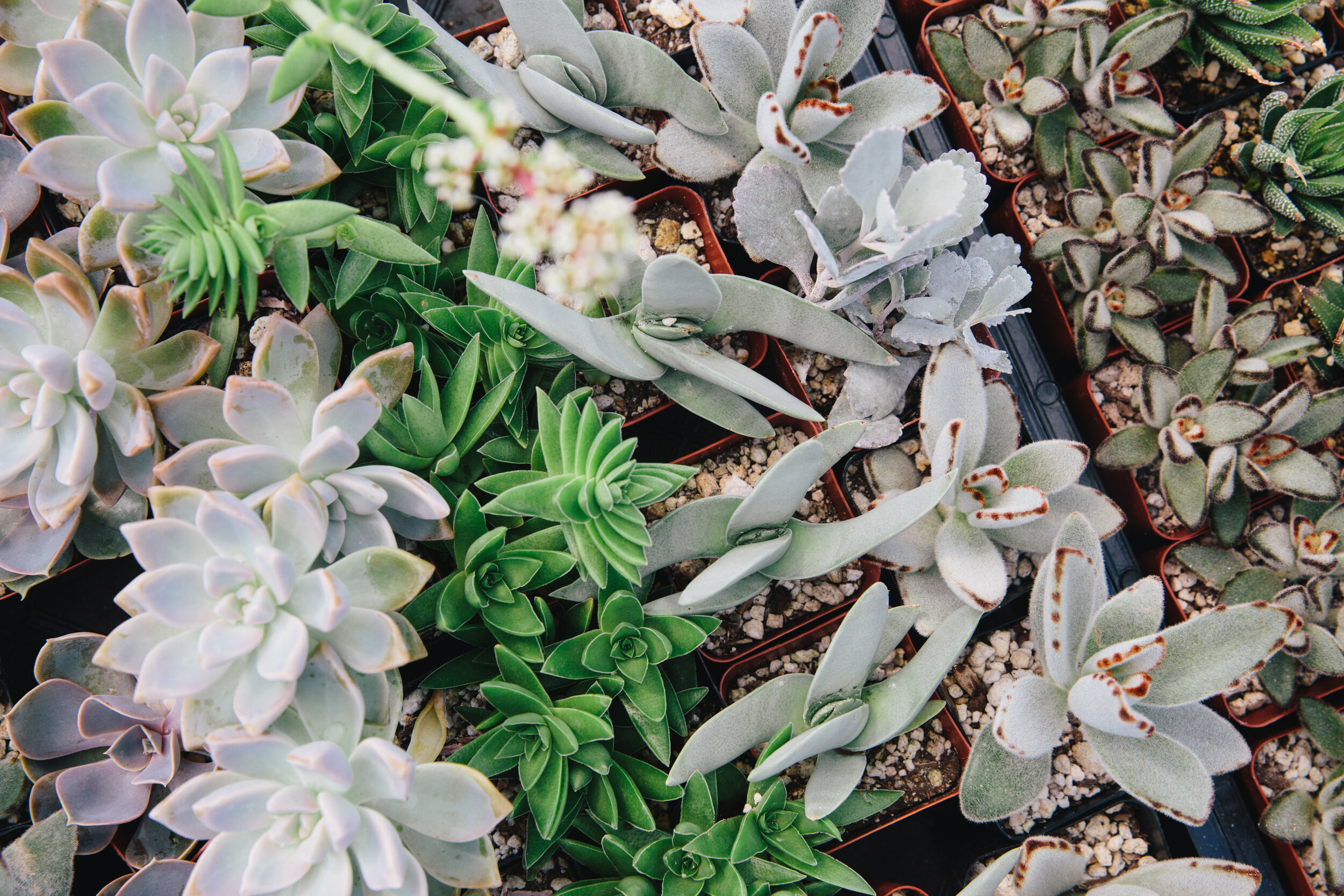SUCCULENTS + CACTI
Succulents are plants with fleshy, thickened leaves and/or swollen stems that store water. The word “succulent” comes from the Latin word sucus, meaning juice or sap. Succulents are able to survive on limited water resources, such as dew and mist, making them drought tolerant. There are many different species of succulents spanning several plant families, and most people associate succulents with Cactaceae, the cactus family. (Keep in mind, however, that while all cacti are succulents, not all succulents are cacti.) Here are Five easy steps for insuring your new plants longevity!
Soil- Succulents love well draining soil. Root rot is the #1 reason for your succulent to die so its important to choose a Cactus Mix soil and layer the bottom of the container with pebbles or add sand to the soil to help with drainage issues.
Water- Water when the soil is dry. About once a week during hotter months (Thirsty Thursday!) and a little less when the weather cools. You can avoid root rot by making sure the soil is totally dry between waterings. If your pot has a drainage hole water the soil completely through leaving it to dry in a sunny place. If there is no drainage hole in your pot just give your plant a "Sip" of water on the soil.
Light- Succulents do best in bright but indirect sunlight.
Most succulents prefer at least 6 hours of sun per day, so try to place them near a south- or east-facing window, if not outside. You may notice your succulents becoming spindly or stretching toward the light if they don’t get enough sun.
Fertilizer- Plants benefit most from fertilizer in the spring (when the days get longer and new growth begins), and again in late summer. There is no need to fertilize succulents in winter when they’re semi-dormant., They don’t need the nutrient boost because they are not actively growing.

